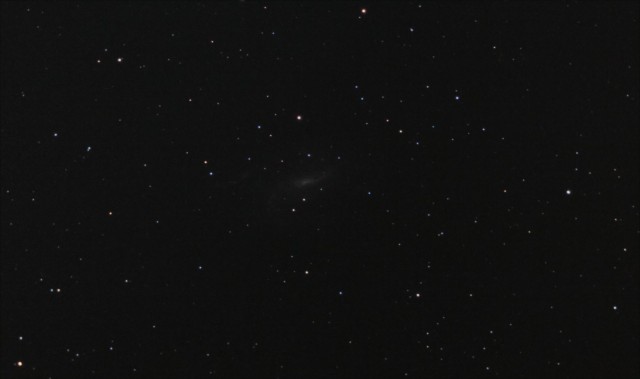
I wanted to see what this was. It appears to be a spiral galaxy. With just 18 sub-images, it is only barely visible. I might come back to this one with longer exposures and 4 times as many subs to bring it out better.

I wanted to see what this was. It appears to be a spiral galaxy. With just 18 sub-images, it is only barely visible. I might come back to this one with longer exposures and 4 times as many subs to bring it out better.
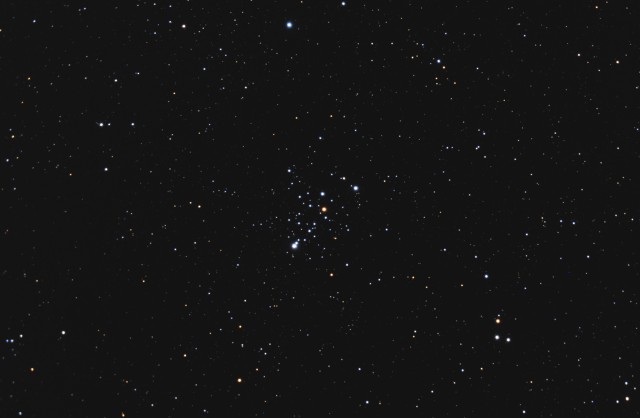
A bright moon precludes imaging dim nebula or galaxies, but not open clusters. Here’s one in Cassiopeia I’ve not imaged in quite some time, if ever.
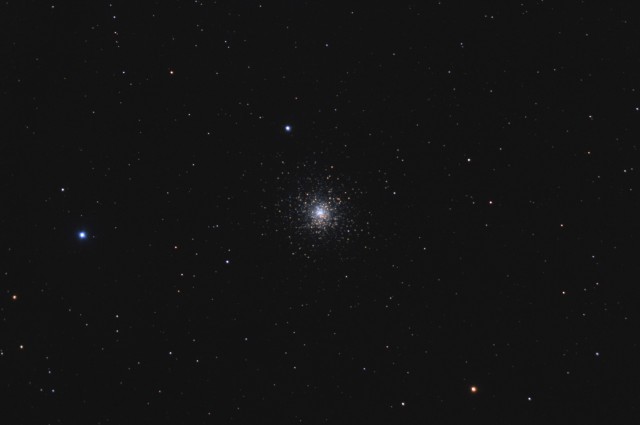
It has been so long since I imaged with the C8 I forgot how big a globular would look in it. To satisfy my curiosity, I shot M15 at the start of my imaging session on Nov 29, 2014. I had to crop out the distortion in the corners, so this is roughly a 60% crop of the central region.
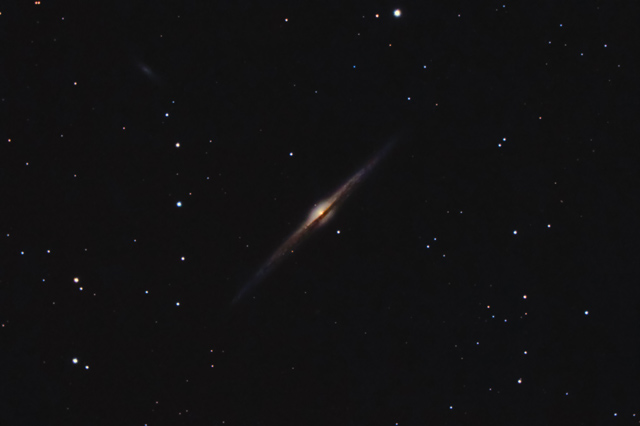
This is a “quickie” of one of my favorite deep sky objects, taken with my Celestron C8 SCT. Edge-on galaxy NGC 4565 is the best example of the edge-on galaxy class in the sky. I shot this right before sunrise when the object was just high enough to start imaging. It could use more time and I’ll probably add to it (I did on Nov 29, 2014 – an additional 40 minutes of data.) I’m pleased at what I have so far. I haven’t seen it in quite some time and it was nice to image it again.
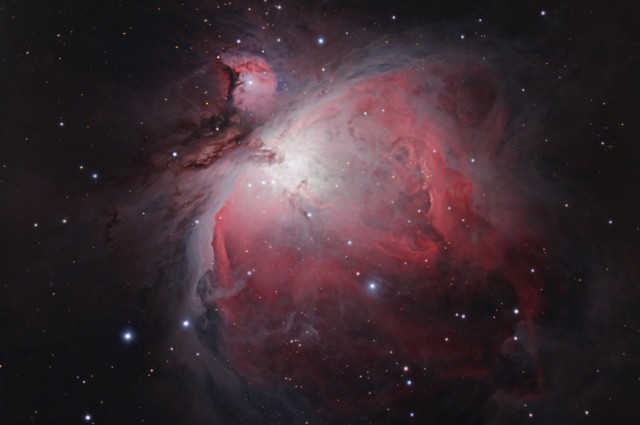
One of my first images shot through a telescope at prime focus was of M42, the Orion Nebula. It was taken with my Celestron C8 SCT and 35mm film. Here’s the latest digital version of the same object taken with the same scope. I had to work hard aligning and collimating the scope before taking the sub-images for this, but the old girl is back in shape and delivered some useful data for this often imaged object. It just fits in the field of view at 1260mm of focal length.
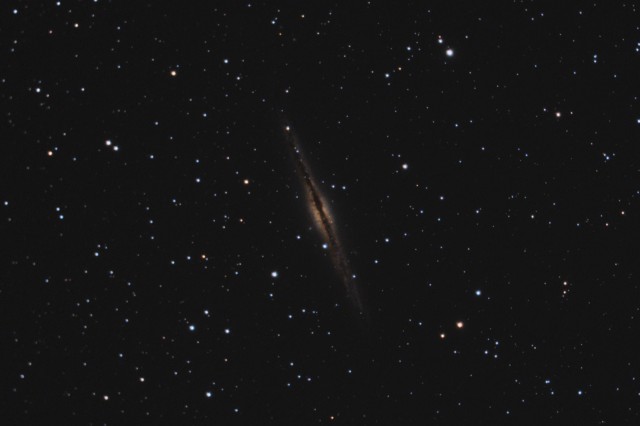
Edge-on galaxy NGC 891. The “Outer Limits” moniker is from an old 1960’s sci-fi TV show of the same name. An image of the galaxy was featured prominently in the closing credits, along with some other galaxy images, all in black and white.
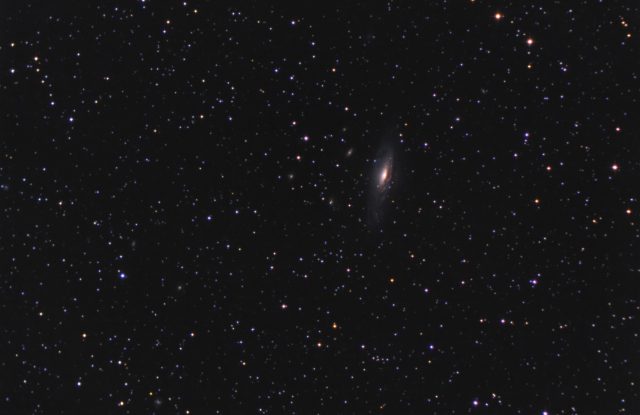
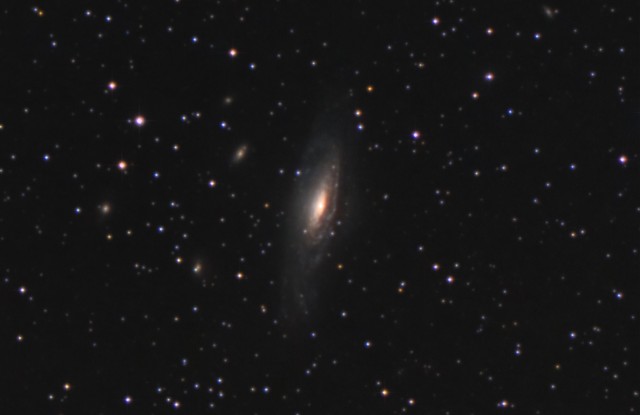
At the end of October 2014, I was shooting images of some brighter NGC galaxies, but the TV-85 scope I was using just didn’t have enough image scale to do them justice, so I never posted them. Well, my old C8 is still kickin’ and it has over 2.5 times the focal length of the smaller refractor. But, I needed a way to guide it and the 50mm guiding scope arrangement I used once for it was just not good enough.
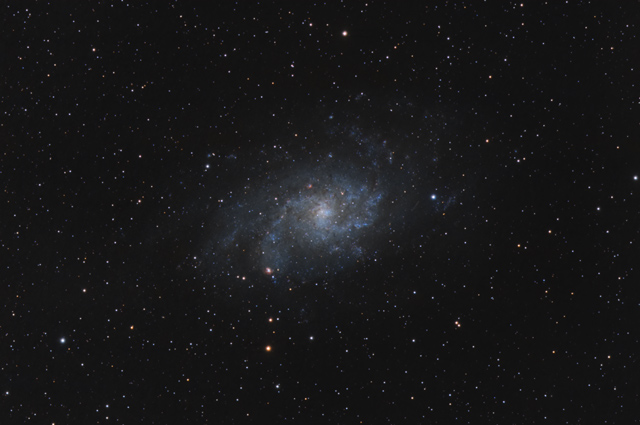
Here’s a center crop of M33 that I took recently. It didn’t come too bad, all things considered. Notice that there is an asteroid to the right of the nucleus of M33, before that bright star. That is 1503 Kuopio (1938 XD,) a mag 14.3 asteroid that just happened to be in the shot. So, I got two for the price of one for this gig. 🙂
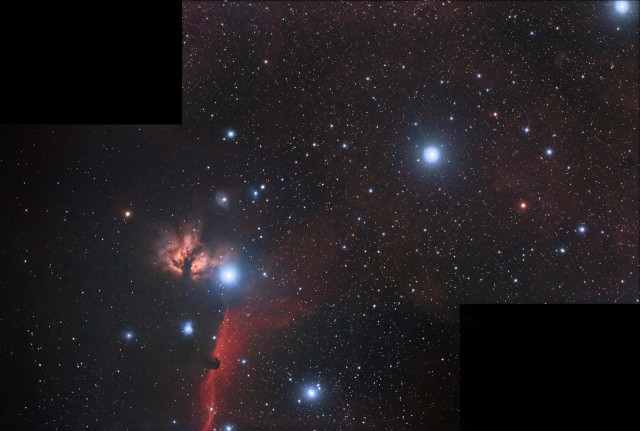
Here’s one that’s in progress. I shot this area over two nights. I have very little of the Horse Head region from these sessions, but another 40 subs of the belt stars upper frame area. I should be able to put something together with other data from older sessions and get a somewhat complete mosaic image. (Update: Yes, I was able to add some old data and smooth it out.)
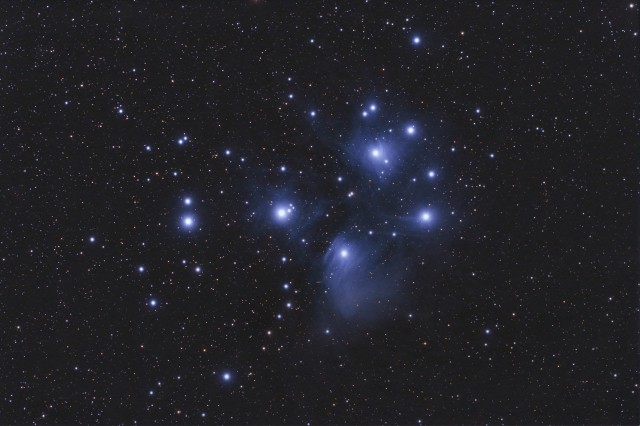
I had time to kill while waiting for Orion to get into position, so I shot 40 x 2 minute sub-images of the Pleiades at ISO 3200. I did not spend much time in post processing this, but it came out half-decent regardless.